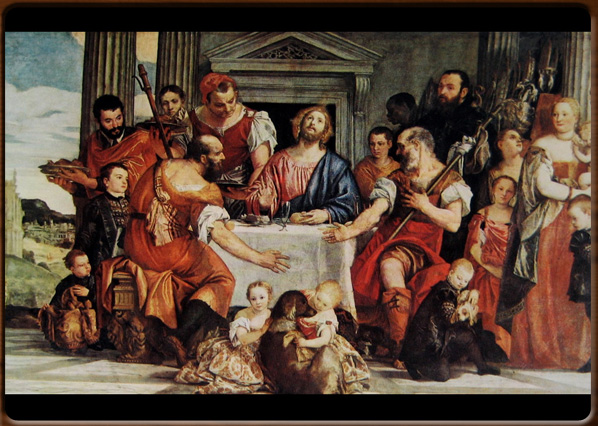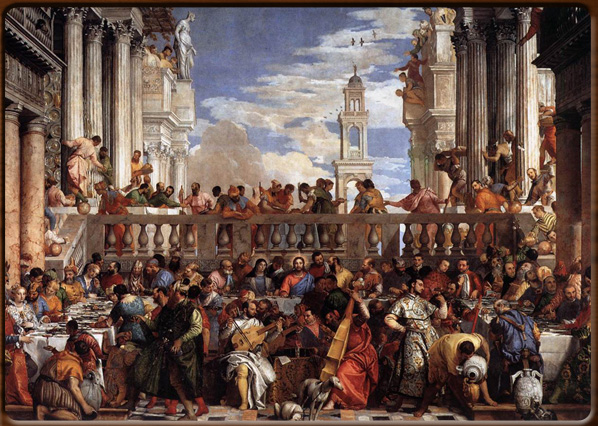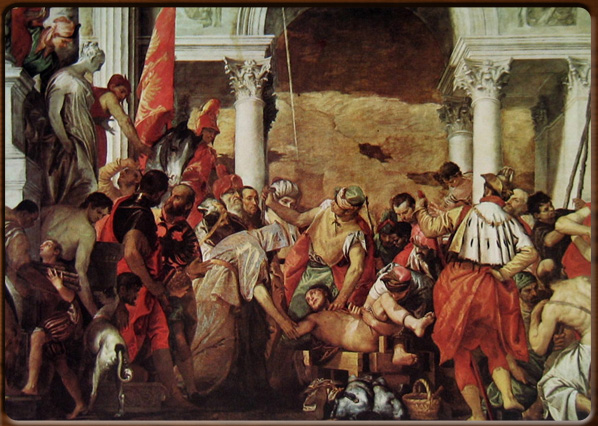Paolo Caliari, known as “Paolo il Veronese” (Verona, 1528 – Venice, 1588) was a much appreciated painter in the 16th Century. He studied under Antonio Badile, entering the Venetian art scene when still very young in 1553.
Veronese was an excellent decorator, whose early works in Venice appear to have been inspired by
Roman/Emilian Mannerist models (in the Sala del Maggior Consiglio in the
Doge’s Palace, 1553; the
Church of S. Sebastiano, 1556 and the
Libreria Sansoviniana, 1556). He further developed and perfected the profane Olympic serenity of his paintings after a trip to Rome in 1560, as seen in one of his absolute masterpieces, the frescoes in Villa Barbaro in Maser (Treviso).
His “Supper” series are the maximum expression of his scenographic ability: the Supper in Emmaus (c. 1560) and the Wedding of Cana (1562), both in the Musee du Louvre (Paris) and the Last Supper (1571-73) in the Gallerie dell’Accademia. He also developed portrait painting, both single figures and large compositions (The Cuccina Family, 1571, Gemäldegalerie in Dresden). His later works include the decoration of the ceiling in the Sala del Collegio in the Doge’s Palace in Venice (1575-77) and the four Allegories of Love (c. 1580) painted for Emperor Rudolf II and now in The National Gallery (London).



